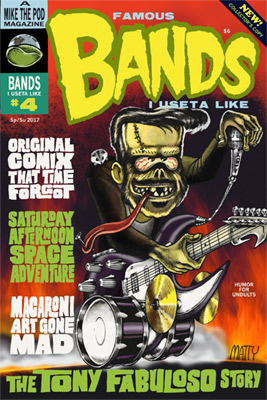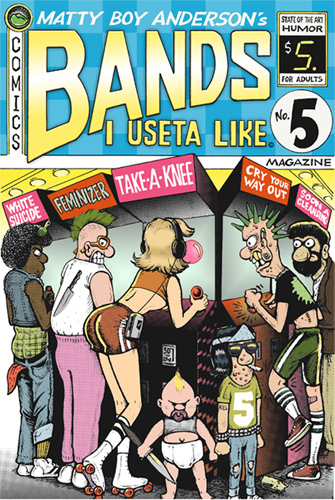Yea, I say unto you, I was in the right place at the right time for two major moments in American history. You must believe that what I’m about to tell you is the truth; it will seem like so much legend and myth.
The first: I was gifted a copy of E.T. (the game) for the Atari 2600, on Christmas, but that is a tale for another article.
The second, and more significant: I talked my father into buying me Pac-Man for the Atari 2600, one of the most notoriously disappointing games of all time. Second only to E.T.,of course.
It took some convincing, too; my dad had gotten wind of the bad rumors surrounding the mighty Pac’s arrival on the 2600. As always, I was entranced by the incredible cover art. I was young, dumb, and full of gum. Pac-Man was my very favorite arcade game at 9, and the good people at Atari were thoughtful enough to upgrade the “power pellets” to power bars. BARS!
I clearly recall bullshitting a grade school buddy by telling him the 2600 version contained “more dots”. I was consumed by a desire I could not comprehend. Basically, I was good at a video game, it was a new phenomenon, and pretty much everybody was playing by ear. Perhaps it really was “Pac-Man Fever”.
The disappointment in this particular cartridge is so strong, the mere sound of its starting up can trigger a rage response in guys like myself. Whenever characters in a sitcom are playing a video game, the audio of the Atari 2600 Pac-Man is dubbed in- no matter what the game is meant to be. It begins with an atonal four-note “doo-dah-dah-DEE”, followed by the utterly dreadful “benk benk benk” of “Pac-Man” eating the “bars”. Pac-Man’s death is marked by a swirling-upward “doo-dah-DEE”.
I was unaware that I’d played better before. I put all my faith in Atari, like so many others did. I trusted them to make an adaptation of my favorite game that measured up to the packaging and hype. Finally, somehow, I talked my dad into buying it. He grimly looked at the box as he forked over too much cash. He knew.
I can only imagine what the experience was like for Tod Frye. That’s the programmer who coded Pac-Man, who wields the lion’s share of the blame in the public’s eyes. Howard Scott Warshaw was the poor bastard forced to crank out E.T. in six months, but at least he created Yar’s Revenge. Frye didn’t even bother with an Easter-egg signature. Why take the credit?
Compare the video above to any other version of Pac-Man. Now imagine playing it while your dad glares at you behind your back. Friends come over, laugh at you, and stop being your friends. Look at Pac-Man! Did he have a stroke?! He glides past corners like a couch on muddy skates! The ghosts are all one color! I can’t tell when they’re vulnerable! OH MY GOD I’M A LAUGHING STOCK AT SCHOOL!
Eventually, Dad sensed my sheer embarrassment, and our home later welcomed a proper Pac-version, for our Atari 800XL home computer. He tried to return the 2600 cartridge, and of course, could not. The word was out. Also as a concession prize, I received the Frogger tabletop (LCD) home version, since Pac-Man was always sold out. Frogger played really well, and it was a nice addition to my collection (I had Scramble, and… that was pretty much it).
My father understood that there is only so much disappointment a kid should experience. He bought me this plastic crap so that my ego wouldn’t be irrevocably damaged. I wanted nothing more at 9 than to be a video game designer. I used to code my own games, by breaking into them (if they were written in BASIC). I had sketchbooks filled with hundreds of concepts. Very few of them were Pac-Man or Donkey Kong clones. Not more than half, anyway.
All it was was dots on a screen, man! Nothing more than dots on a screen!
When I first lowered myself to getting a smartphone, one of the first things I did was download a “Pac-Man” app. There, at tiny size, was a perfect replica of the game that drove me to obsession at 9. I could hardly operate it; could anybody? Would they? Is the app useful as anything but a memorial to past digressions?
What was it all, other than electric carnival kiosks? What is it now? Almost everyone walks around with a device upon which they play a game not much more complex than Pac-Man. The game must be simple, due to the physical limitations of the device and the human head.
I first experienced Pac-Man (and his superior female counterpart, Ms. Pac-Man) in an arcade. The whole idea of an arcade is to play video games standing up among other people. It was all pitched as a social experience. It was. You could meet girls in an arcade (I was too young). You could make new friends. You could shoulder-check a kid for putting quarters on the screen. That was supposedly how you claimed the next game, but nobody likes to be reminded they’re out of quarters and have to go. HOT RED FACE TIME!
In Terminator II, where is young John Connor when Arnold finds him? At an arcade. In TRON, what do we first see Jeff Bridges doing? Playing a game in an arcade. While people are cheering. It was a real thing, up until the mid-90s. It was how you got better at video games. A quarter at a time.















You must be logged in to post a comment.